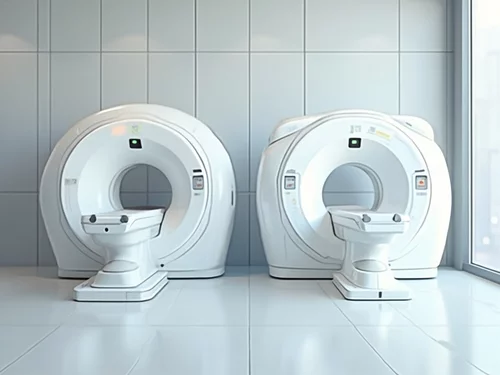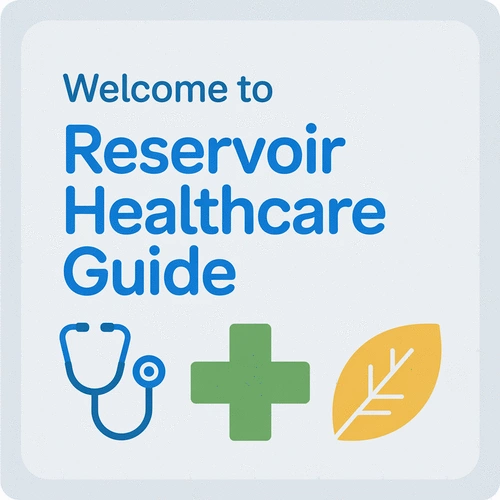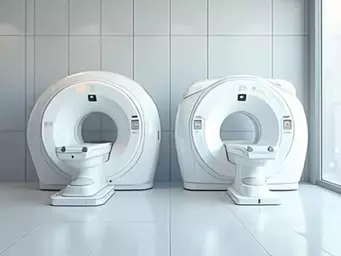Have you ever found yourself confused about which imaging test is right for your medical needs? Understanding the differences between MRI and CT scans is crucial for informed healthcare decisions. In this guide, we break down the essentials, helping you choose wisely.
What You Will Learn
- MRI vs. CT Scan: Learn the fundamental differences between these two imaging technologies, including their operating principles and typical use cases.
- Imaging Strengths: Discover which imaging method is best suited for soft tissue evaluation (MRI) versus quick assessments of bony structures and internal bleeding (CT).
- Scan Duration: Understand the typical duration of each scan, with MRI generally taking longer than CT scans.
- Patient Comfort and Safety: Gain insights into the importance of communicating any medical conditions or allergies before undergoing imaging procedures.
MRI vs. CT Scan: A Comparative Overview
This visual highlights the key differences between MRI and CT scans, essential diagnostic tools in healthcare.
Understanding MRI and CT Scans: What You Need to Know
When it comes to diagnostic imaging, you may find yourself wondering about the differences between MRI and CT scans. These technologies play vital roles in helping healthcare professionals diagnose medical conditions. At Reservoir Healthcare Guide, we strive to simplify this complex information for the community, ensuring you can make informed decisions about your health.
Essentially, MRI (Magnetic Resonance Imaging) uses powerful magnets and radio waves to create detailed images of organs and tissues. This is particularly useful for examining complex structures like the brain, as highlighted by resources from institutions such as the Tisch Brain Tumor Center at Duke. On the other hand, CT (Computed Tomography) scans utilize X-rays and computer processing to generate cross-sectional images of the body. Understanding how these technologies operate can help you grasp their primary functions and applications.
Defining MRI and CT Scan Technologies
Let’s break down the fundamentals of these two imaging technologies:
- MRI: This technique is particularly effective in imaging soft tissues, making it invaluable for evaluating conditions related to the brain, spine, joints, and internal organs. The absence of radiation exposure makes it a preferred option for certain diagnostics, as detailed in scientific literature such as articles available on PMC.
- CT Scan: This method excels in providing high-speed images, making it preferable in emergency situations, as it captures detailed images of bony structures and internal bleeding.
By understanding these basic definitions, you can better appreciate how each imaging technology contributes to patient care and diagnosis.
Comparative Overview: MRI vs. CT Scan
As you navigate your healthcare options, it’s important to recognize the key differences between MRI and CT scans:
- Imaging Technique: MRI uses magnetic fields and radio waves, while CT scans use X-ray technology.
- Image Types: MRI produces detailed images of soft tissues, whereas CT scans excel at showing bony structures and internal bleeding. For a deeper dive into these distinctions, you can consult expert insights from sources like MD Anderson Cancer Center.
- Scan Duration: An MRI typically takes longer than a CT scan, which is often completed in just a few minutes.
With these distinctions in mind, you can better assess which imaging option may be suitable for your specific health concerns. At Reservoir Healthcare Guide, we encourage you to consult with your healthcare provider to explore which imaging technology aligns best with your needs.
We Want to Hear From You!
As you consider your options between MRI and CT scans, what factors matter most to you? Is it the speed of the scan, the type of images produced, or perhaps the comfort level during the procedure? Share your thoughts below:
Frequently Asked Questions About MRI and CT Scans
What is the main difference between an MRI and a CT scan?
An MRI (Magnetic Resonance Imaging) uses powerful magnets and radio waves to create detailed images of soft tissues, while a CT (Computed Tomography) scan uses X-rays and computer processing to create cross-sectional images, excelling in bony structures and emergency situations.
Which imaging test is better for soft tissue evaluation?
MRI is generally better for detailed soft tissue imaging, including the brain, spine, joints, and internal organs, due to its ability to differentiate between various tissue types more clearly.
Do MRI and CT scans involve radiation exposure?
MRI does not involve radiation exposure, as it uses magnetic fields and radio waves. CT scans, however, do involve radiation exposure because they utilize X-ray technology.
Which scan is faster, MRI or CT?
CT scans are typically much faster, often completed within minutes, making them ideal for emergency situations. MRI scans usually take longer, sometimes up to an hour or more, depending on the area being scanned.
When should I choose an MRI over a CT scan, or vice versa?
Choose an MRI for detailed soft tissue analysis, neurological conditions, or if radiation exposure is a concern. Opt for a CT scan for rapid assessments, bone injuries, internal bleeding, or in emergency situations where speed is critical.
Summarizing Your Options: Choosing Between MRI and CT Scan
As we wrap up our discussion on MRI and CT scans, it's essential to recap the key points surrounding these two diagnostic tools. In essence, MRIs are particularly effective for visualizing soft tissues, while CT scans shine in rapid assessments and bone injuries. Understanding their distinct advantages allows you to make informed decisions about which imaging option aligns best with your healthcare needs.
Both MRI and CT scans have their unique strengths, and your choice may depend on the specific medical situation at hand. For example, if you're looking for detailed images of the brain or soft tissues, an MRI might be your go-to option. On the other hand, if you're dealing with a traumatic injury or need a quick evaluation of potential internal bleeding, a CT scan could be more appropriate.
- MRIs: Best for soft tissue analysis, neuroimaging, and absence of radiation exposure.
- CT Scans: Ideal for emergency situations, bone injuries, and quick diagnostics.
- Consider patient comfort and scan duration as additional factors affecting your decision.
Ultimately, understanding the nuances between these imaging technologies is crucial for making the right choice. I encourage you to engage with your healthcare provider to discuss your specific circumstances further.
Making Informed Decisions: Your Next Steps
Now that you're more informed about the differences between MRI and CT scans, it’s time to think about your next steps. I always advise patients to consult with their healthcare providers to discuss which imaging option suits their individual medical needs. Every situation is unique, and having a professional's insight can help tailor the right approach for you.
Don’t hesitate to ask questions! What are your concerns? What do you want to know about each option? A good conversation with your doctor can lead to clarity and confidence in the diagnostic process.
Utilizing Resources for Informed Choices
In addition to your discussions with healthcare providers, there are many resources available to help you navigate your decisions. Patient decision aids and online tools can offer valuable comparisons between MRI and CT scan options. Here are a few resources to consider:
- Patient education pamphlets from your local healthcare facility.
- Interactive websites that allow you to compare imaging options based on your symptoms.
- Community health workshops that discuss diagnostic imaging and patient rights.
Using these tools not only empowers you but also helps ensure that you feel confident in your healthcare choices. Remember, your health journey is a collaborative effort!
Understanding Imaging Protocols and Safety Measures
Lastly, let’s explore the significance of imaging protocols and safety measures in MRI and CT scans. Adhering to established protocols ensures both patient safety and diagnostic accuracy. For instance, during an MRI, it’s vital to inform the technician about any medical implants or conditions, while with CT scans, understanding the use of contrast agents is equally important.
Here are some safety measures to keep in mind:
- Always communicate any allergies, especially to contrast materials.
- Follow pre-scan instructions carefully, such as fasting or medication adjustments.
- Ask about noise-reduction strategies or relaxation techniques if you're anxious about the scan.
By being proactive and informed, you can help ensure a smooth and safe imaging experience. At Reservoir Healthcare Guide, we're here to help you through every step of your healthcare journey, ensuring you have the resources and support you need!
Recap of Key Points
Here is a quick recap of the important points discussed in the article:
- MRI: Effective for imaging soft tissues, ideal for neuroimaging and conditions related to the brain, spine, and joints.
- CT Scans: Best for rapid assessments, particularly in emergency situations, and excels at visualizing bony structures and internal bleeding.
- Consider patient comfort and scan duration when deciding between MRI and CT scans.
- Consult with your healthcare provider to make informed decisions tailored to your specific medical needs.
- Utilize resources such as patient education pamphlets and interactive websites to compare imaging options effectively.










